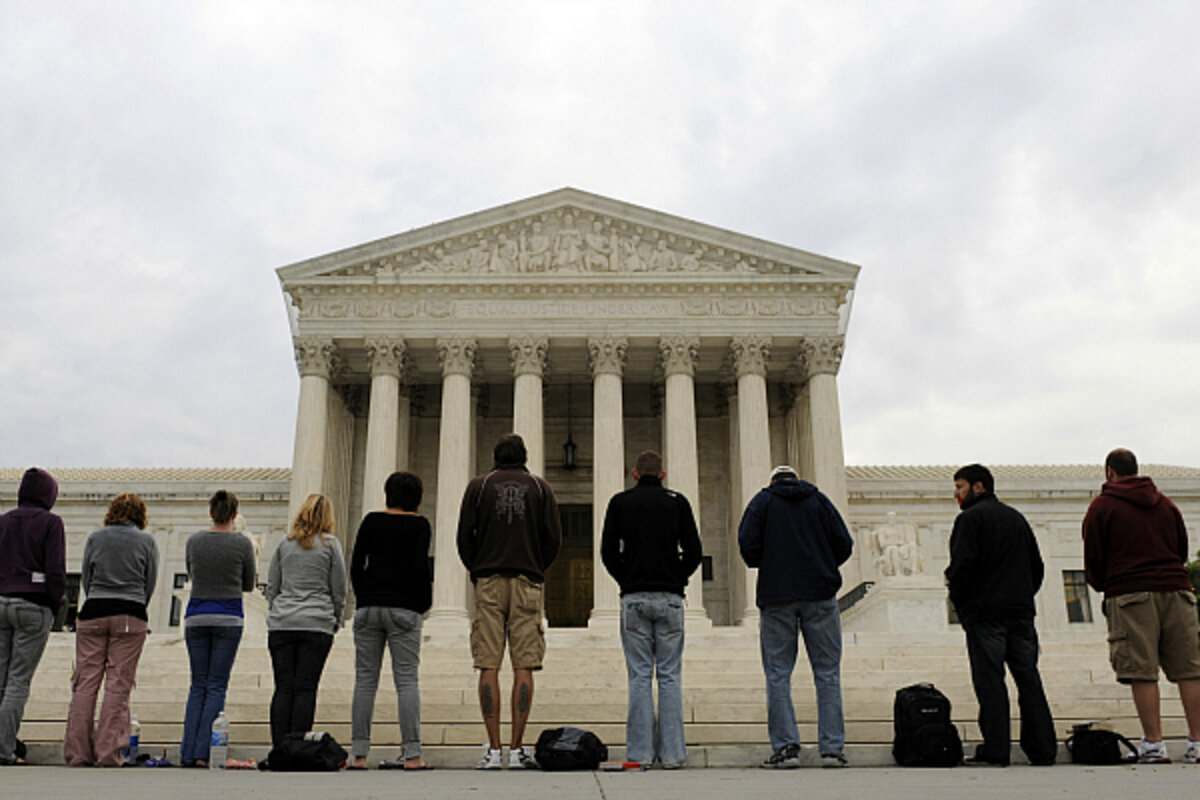Occupy Supreme Court: Could it happen?
Loading...
| Washington
The ‚ÄúOccupy‚ÄĚ movement has occupied a lot of places. It has occupied Wall Street. It has occupied D.C. (OK, McPherson Square in D.C.). It has occupied bits of public space in Oakland, Calif.; San Francisco; Baltimore; and too many other locales to list here.
But one place they’re unlikely to occupy, at least for very long, is the plaza in front of the US Supreme Court. It may seem ironic, but it’s true: Protests and demonstrations are banned by federal law on the grounds of the very institution that oversees the First Amendment.
It‚Äôs right there in Title 40, Subtitle II, Part C, Chapter 61, Subchapter IV, Section 6135 of the US Code: ‚ÄúIt is unlawful to parade, stand, or move in processions or assemblages in the Supreme Court Building or grounds, or to display in the Building and grounds a flag, banner, or device designed or adapted to bring into public notice a party, organization, or movement.‚ÄĚ
They enforce it, too. The Supreme Court Police (yes, America’s top jurists have their own security) are quick to deal with the unfurling of banners and so forth. This has ensnared groups on both sides of the spectrum.
In May 2010, court cops told some evangelical ļ£Ĺ«īů…Ůs praying at the bottom of the court steps to cease and desist. This Oct. 16, Princeton professor and all-around activist Cornel West and 18 others were arrested on those same steps for participating in an anticorporate protest sponsored by Stop the Machine, a group under the umbrella of the Occupy movement.
Attorneys for the left-leaning National Lawyers Guild (NLG) are currently challenging the Supreme Court’s special protection on First Amendment grounds.
Will the NLG prevail? Well, we wouldn‚Äôt start planning an ‚ÄúOccupy the Supreme Court‚ÄĚ tent city just yet. The D.C. Court of Appeals denied a similar NLG request last year. In part, that‚Äôs because the court upheld the legal precedent that the Supreme Court plaza is a nonpublic place.
The sidewalk in front of the high court is another matter. The Court of Appeals reiterated that the walk is a public place, open for protests. But ‚ÄúOccupy the Two-Foot Strip of Concrete in Front of the Supreme Court‚ÄĚ is kind of hard to fit on a placard.




